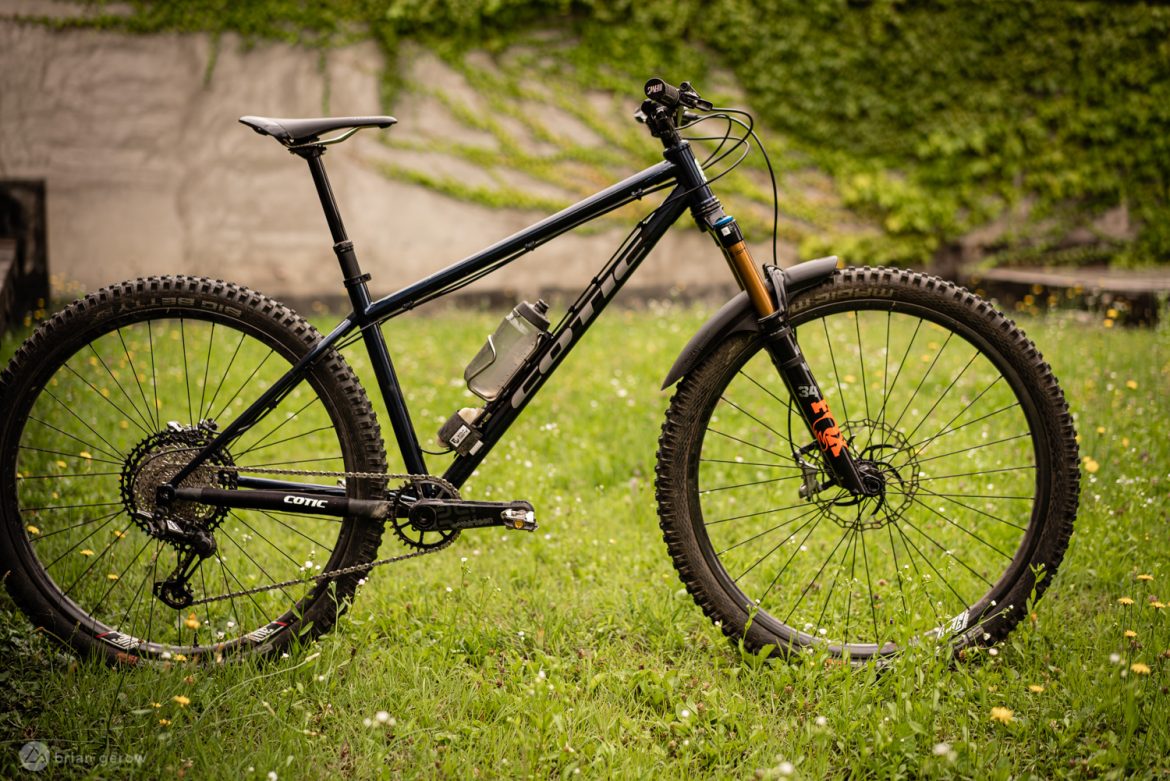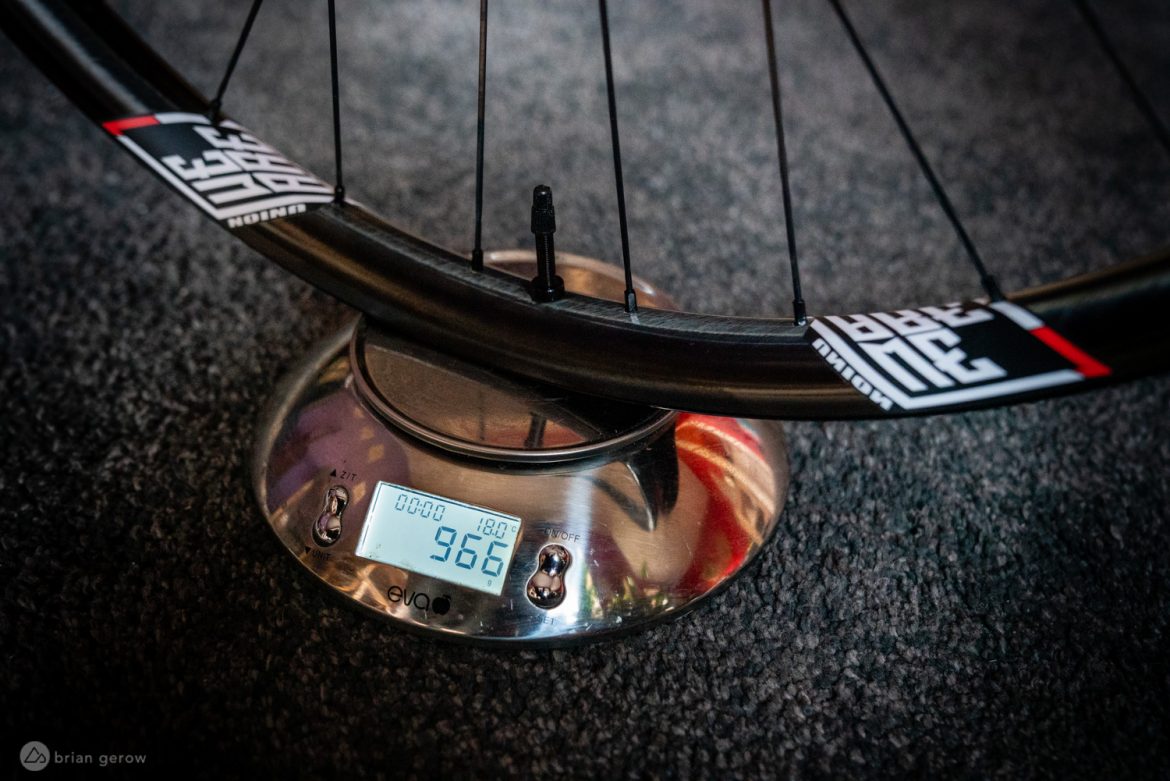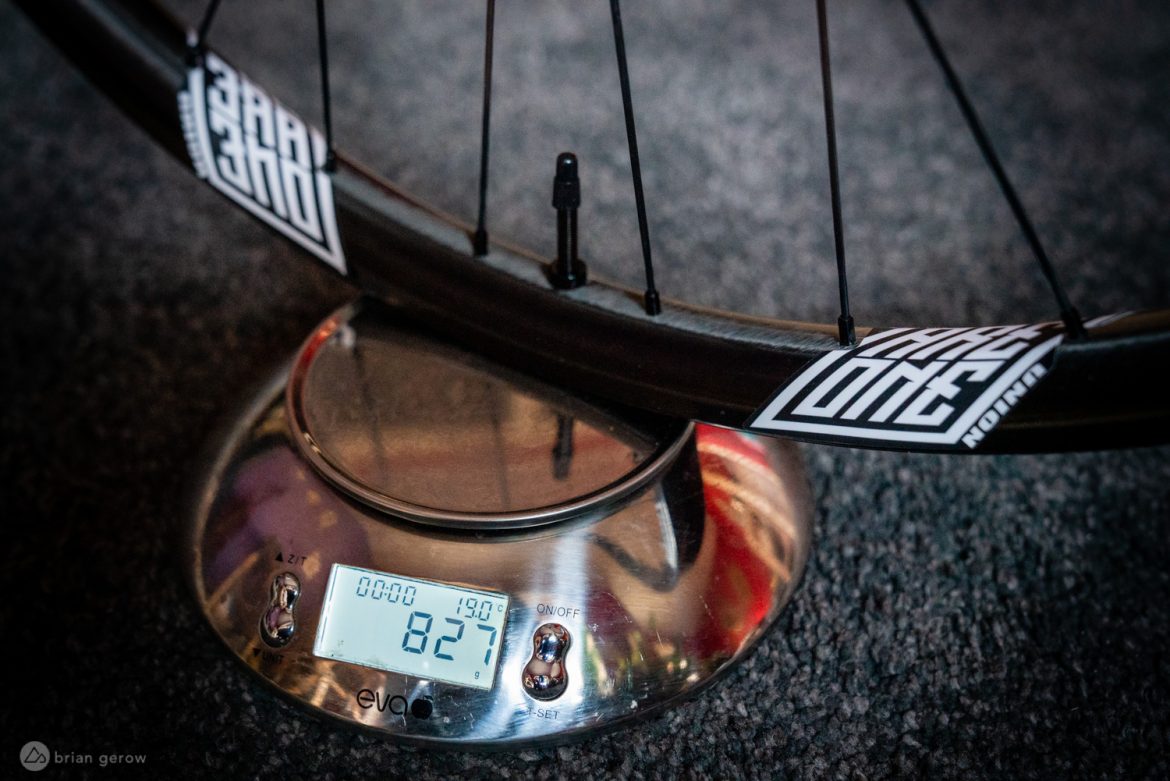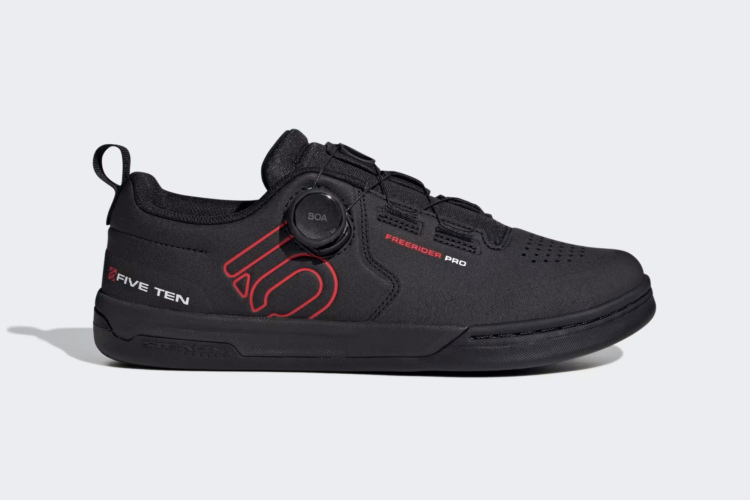
Carbon fiber MTB rim designers have made some important engineering shifts over the past few years, resulting in hoops with a little more give (compliance) in the right direction. The black fibers also react better to the constant impacts and hard compressions of modern mountain biking. For a deep dive into carbon rims, check out our interview with We Are One Composites owner Dustin Adams.
Dustin worked with another carbon rim company prior to starting We Are One Composites, where he learned a great deal about what he did and didn’t want to do with his own Canadian-made rim designs. Namely, he wanted to change the rim profile in order to increase radial compliance as the wheel encounters direct hits and compressions, all while reducing the jittery harshness that some carbon rims were known for. The wheels would need to maintain fairly sharp lateral stiffness for precise steering and efficient sprinting, and above all they had to be able to withstand massive rock strikes without cracking.
The team at We Are One Composites has arguably achieved these lofty goals, creating some of the best-riding, carbon-rimmed wheels we have tested to date. Their ride feel is up there with the best in the dirt biz, and the spoke tension and true remained dialed throughout this long term test. Our custom build and ride impressions are detailed below.
Wheel systems are both sensitive and reactive, jammed with crucial variables to consider. If the spoke tension rises or falls by a quarter rotation you will feel it, and the way those spokes are laced and butted can make a meaningful difference in how a wheels et rides. For these reasons, I like to go straight to the top when buying or testing a hand-built set of hoops. Given my personal taste, the top includes Sapim CX-Ray spokes. They cost about three times as much as other spokes, drop about 100g from a complete wheels et compared to DT Swiss Race spokes, and they’re wicked strong. I have enjoyed the ride every time with these little steel sticks, and when I noticed that We Are One offers them I had to click the upgrade box. Paired with alloy nipples, these are the weight-saving way to roll, and the added $144 upgrade price will eventually spread out across the fewer calories required to spin them.

The Canadian-made rims and Belgian spokes are laced to a set of USA-made Hydra Hubs from Industry Nine. I won’t drone on about these hubs, since we have already reviewed them. I’ll simply echo that they are some of the best MTB hubs on the market, and I would happily buy another set for my next build. I love the quick engagement on messy climbs, and any added pedal kickback I noticed from the tight engagement felt like a new-normal quite quickly. These were great hubs to test the O-Chain active spider with, and for dedicated gravity racers the Hydra freehub and an active spider pairs well to get the exact amount of desired kickback. Since the freehub engagement is essentially immediate, you can use the O-Chain to precisely dial in 6, 9, or 12° of movement for a given track surface or frame.
I did have an issue with some centerlock rotors on these hubs, where the centerlock-ring would bottom out on the end cap of the hub and prevent it from moving. The non-driveside cap became locked in place as the threaded portion of the ring bottomed out against it. This was easily remedied by adding a spacer between the hub and lockring, but it’s worth noting that not all lockrings play nicely with these I9 hubs. There are 6-bolt versions available that forego this issue all together.

We Are One makes five different rim profiles that come in 26, 27.5, and 29″ diameters with varying internal widths and intended uses. I tested the Union 29 rims, designed specifically for enduro racing and riding on similar tracks. The 32 spoke holes are placed off center by 2mm to allow for a more symmetrical and stronger system overall. The rim’s hookless bead is designed for 2.35 to 2.8″ wide tires, and the 30mm internal measurement spreads a 29×2.4″ Schwalbe Big Betty to 60mm or 2.36″ of square traction grabbing goodness.
Speaking of grip, this Canadian carbon crew has dialed lateral stiffness to the letter. You can tell when a company’s engineers are legit mountain bikers by how their creations function in the forest, and these cats clearly ride. The relatively low 21mm rim profile does an impressive job of maintaining stiffness that equates to sharp handling and line choice without sacrificing grip. I have tested a number of the older-style, taller rim profiles that Dustin wanted to move away from, and several of those felt too stiff both laterally and radially.
Compared to alloy, those former rim profiles made it feel like the fork’s rebound knob was sped up several clicks, or as if someone had pumped another 10psi in the tires while you were paying for lunch. Jittery and nervous were words used to describe the experience of carbon rims a few years back, requiring lower tire pressure and softer suspension to compensate. This latest recipe rides far better, and allows folks to dial in their bike to the trail instead of adjusting for unyielding rims. Now you can have the precision handling of carbon fiber rims, with the radial compliance and dampening qualities of alloy, and the carbon rims will bounce back from larger impacts that would leave an alloy hoop kaput.

In order to feel the Union 29 rims’ radial stiffness in berms and compressions I pulled them off the 161mm gravity sled and put them on my 130mm-forked hardtail. I appreciated their composure over braking bumps and chunky rock gardens with the long-travel ride, but hardtails will always tell a wheelset’s darker secrets. I swapped out a lightweight 28-spoke aluminum wheel set for the Union circles, and I was blown away by the similarities in radial forgiveness. To oversimplify the story, this new rim technology takes all of the carbon material of its taller predecessor and packs it into a smaller package for better impact management in a more tunable rim layup. While the carbon rims are far stiffer laterally, both the alloy and carbon sets have a similar character when it comes to absorbing vibration and impacts, ovalizing and snapping back to their original shape. How the system can do this without losing or changing spoke tension is a marvel of wheel building witchery.
Like a quality alloy wheel system, you can feel when the Union wheels load up with pressure in tight compressions and max-speed berms, and their rebound pop is dialed for leaping out of those features. If you haven’t experienced this sensation yet, I would highly recommend trying a set of these or similarly designed wheels. Dustin said that the latest carbon wheels from Crankbrothers are built with similar philosophies and intentions.

In addition to being laterally stiff and maintaining grip with little deflection — and munching a good amount of trail chatter to kick-in a little added pop — the Union 29 rims only weigh 495g. While not featherweight, that’s an impressive measure for a wheel that can withstand gravity race impacts. For folks who pedal to the top of their fun, lighter wheels like these will feel easier on the legs and glutes so you can save those watts for the party. You can also mount up heavier tire casings in exchange for the rim weight to ensure that spare tube stays where it belongs.
Lastly, I didn’t manage to flat a tire with these wheels, despite hearing a number of stoney pings on most rides. The 39mm external rim width leaves the hookless bead with a 4.5mm edge where the tire contacts it, and that blunt blade has failed to slice my tread so far. I tested a raft of rubber on these rims, and even the thinner Schwalbe Super Trail casings remained intact which is a rare occurrence on our nearby trails.
This build retails for $1,798, and the price drops to $1,399 with Industry Nine 1/1 hubs and round spokes. While not a budget option, that’s a pretty sweet price for a system this good with components made in the same place they’re designed.
- MSRP: starting at $1,399
- Available at We are One Composites and Competitive Cyclist
Party laps
- Fantastic trail feel
- Durable construction
- Competitive price
- Low weight
- Impact resistant
Pros and the cons of the We Are One Union Wheelset
Dirt naps
- I9 Hydra hub issue with Centerlock ring
- I9 Hydra hub engagement may be too tight for some
- Alloy nipples have drawbacks























1 Comments
Aug 5, 2021
Now for the plastico rims... Need to look closely at the offerings.